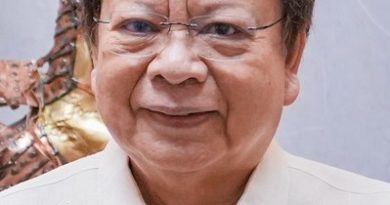COLUMN: AMBASSADORS’ CORNER – Asean agreement on disaster management: How hard, how soft?
BY AMADO S. TOLENTINO, JR.

THERE has been introduced in the Association of Southeast Asian Nations (Asean) countries an impressive array of environmental legislations to achieve sustainable development. The goals of environmental protection have been incorporated in written constitutions and development plans. The right to a healthy environment was even upheld by the Supreme Courts of member countries.
Environmental compliance and enforcement programs are in place with adequate rules and regulations and detailed requirements, licensing procedures and permit systems, inspection programs, training, self-monitoring, citizen complaints. Yet implementation problems and issues persist such as lack of coordination between national and local governments and even among inter-local governments; how best to coordinate legislation among agencies; very little government budget for environmental concerns, among others. Be that as it may, the common environmental challenges have become targets of opportunity for Asean in terms of information on prevention and control methods, inspection techniques and compliance strategies.
.

.<>
What about soft law? Can we have efficient legal instruments without sanctions? Is implementation possible if problems such as capacity and financial resources are not addressed? Asean’s experience at implementation of the Asean Agreement on Disaster Management and Emergency Response (Aadmer, 2009), a soft law instrument on disaster preparedness, emergency response and rehabilitation is a case in point.
Aadmer is an agreement without sanctions ratified by all 10 member countries — Brunei Darussalam, Cambodia, Indonesia, Lao PDR, Malaysia, Myanmar, the Philippines, Singapore, Thailand and Vietnam — as a soft law reached by consensus, the “Asean Way.” In short, it is considered a binding legal instrument of action addressed to the organization which drafted it, setting forth activities to be undertaken by the signatory countries. It affirms Asean’s commitment to the Hyogo Framework of Action (HFA, 2005-2015) on building the resilience of countries to disasters and is the first legally binding HFA-related instrument in the world.
.
.<>
To be more specific, Aadmer is an agreement in the nature of a cooperative program about faster delivery and movement of disaster relief goods, equipment and personnel (e.g. provision of food, water sanitation facilities and temporary shelters), customs and immigration clearance, setting up a relief fund, better utilization of civilian and military personnel as well as stronger and effective simulation exercises to test emergency response.
.
.<>
Aadmer was already in effect when one of the strongest typhoons ever recorded, Typhoon Yolanda, hit Tacloban City and some areas of the Central and Eastern Visayas in the Philippines. Aware that natural calamities are projected to intensify in the Asia-Pacific region in the coming years, Asean countries have embarked on joint and multinational military exercises aiming at greater command-and-control capability and inter-operability in times of disasters and emergencies in the region. Mention should be made that recent Philippines-US military maneuvers called “Balikatan” were no longer about maritime security alone but also about humanitarian assistance and disaster response, the military’s widely accepted secondary role.
Asean’s experience at implementing Aadmer proved that a soft law is an efficient legal instrument even without sanctions. For one, Asean was able to immediately get the cooperation of Indonesia in hosting the Asean Humanitarian Assistance (AHA) Center in Jakarta.
.
.<>
The AHA Center provides the regional mechanism for cooperation, coordination, technical assistance and resource mobilization in all aspects of disaster management under the framework of Aadmer. Specifically, it is the main coordinating body for disaster management to realize Asean’s vision of “One Asean One Response.”
So, is implementation possible if problems such as capacity and financial resources are not addressed? Yes. Asean has shown that the spirit of volunteerism, the rule of no-fault finding, and offer of specialized assistance based on cooperative countries’ expertise within the context of the “Asean Way” could overcome the problem posed by lack of capacity and financial resources in facing environmental challenges. Collectively, this was put forward at the 2004 Paris International Conference on Environmental Governance as the principle of non-obligatory specialized assistance.










